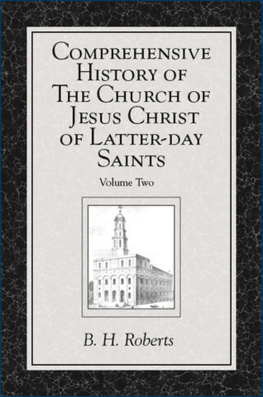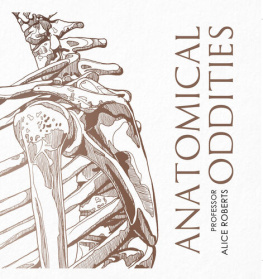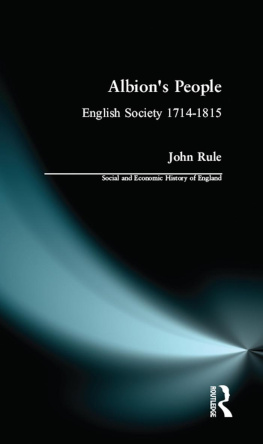Clayton Roberts - A History of England, Volume 1: Prehistory to 1714
Here you can read online Clayton Roberts - A History of England, Volume 1: Prehistory to 1714 full text of the book (entire story) in english for free. Download pdf and epub, get meaning, cover and reviews about this ebook. year: 2001, publisher: Routledge, genre: History. Description of the work, (preface) as well as reviews are available. Best literature library LitArk.com created for fans of good reading and offers a wide selection of genres:
Romance novel
Science fiction
Adventure
Detective
Science
History
Home and family
Prose
Art
Politics
Computer
Non-fiction
Religion
Business
Children
Humor
Choose a favorite category and find really read worthwhile books. Enjoy immersion in the world of imagination, feel the emotions of the characters or learn something new for yourself, make an fascinating discovery.
- Book:A History of England, Volume 1: Prehistory to 1714
- Author:
- Publisher:Routledge
- Genre:
- Year:2001
- Rating:3 / 5
- Favourites:Add to favourites
- Your mark:
- 60
- 1
- 2
- 3
- 4
- 5
A History of England, Volume 1: Prehistory to 1714: summary, description and annotation
We offer to read an annotation, description, summary or preface (depends on what the author of the book "A History of England, Volume 1: Prehistory to 1714" wrote himself). If you haven't found the necessary information about the book — write in the comments, we will try to find it.
A History of England, Volume 1: Prehistory to 1714 — read online for free the complete book (whole text) full work
Below is the text of the book, divided by pages. System saving the place of the last page read, allows you to conveniently read the book "A History of England, Volume 1: Prehistory to 1714" online for free, without having to search again every time where you left off. Put a bookmark, and you can go to the page where you finished reading at any time.
Font size:
Interval:
Bookmark:

The Ohio State University
David Roberts
Dartmouth College
Douglas Bisson
Belmont University

2 Park Square, Milton Park, Abingdon, Oxon OX14 4RN
711 Third Avenue, New York, NY 10017, USA
Product or corporate names may be trademarks or registered trademarks, and are used only for identification and explanation without intent to infringe.
Roberts, Clayton, 1923
A history of England / Clayton Roberts, The Ohio State University, David Roberts,
Dartmouth College, Douglas R. Bisson, Belmont University.Sixth edition.
volumes cm
Includes bibliographical references and index.
ISBN-13: 978-0-205-86777-6 (v. 1: alk. paper)
ISBN-10: 0-205-86777-4 (v. 1: alk. paper)
ISBN-13: 978-0-205-86773-8 (v. 2: alk. paper)
ISBN-10: 0-205-86773-1 (v. 2: alk. paper) 1. Great BritainHistory. 2. England
Civilization. I. Roberts, David, 1923- II. Bisson, Douglas R., 1954- III. Title.
DA30.R58 2013
942dc23
2013028094
- Considers the lives of women in Roman Britain
- Examines the experience of women in the medieval countryside and their contribution to the urban economy
- Offers a section on the origins of the legal profession in the thirteenth century
- Reviews the origins and cultural significance of the legend of Robin Hood
- Reassesses the nature and impact of the Glorious Revolution
Nashville, Tennesse
April 2013
THE LAND AND THE PEOPLE

Font size:
Interval:
Bookmark:
Similar books «A History of England, Volume 1: Prehistory to 1714»
Look at similar books to A History of England, Volume 1: Prehistory to 1714. We have selected literature similar in name and meaning in the hope of providing readers with more options to find new, interesting, not yet read works.
Discussion, reviews of the book A History of England, Volume 1: Prehistory to 1714 and just readers' own opinions. Leave your comments, write what you think about the work, its meaning or the main characters. Specify what exactly you liked and what you didn't like, and why you think so.











